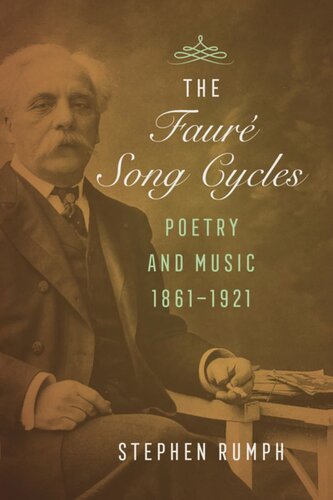

Most ebook files are in PDF format, so you can easily read them using various software such as Foxit Reader or directly on the Google Chrome browser.
Some ebook files are released by publishers in other formats such as .awz, .mobi, .epub, .fb2, etc. You may need to install specific software to read these formats on mobile/PC, such as Calibre.
Please read the tutorial at this link: https://ebookbell.com/faq
We offer FREE conversion to the popular formats you request; however, this may take some time. Therefore, right after payment, please email us, and we will try to provide the service as quickly as possible.
For some exceptional file formats or broken links (if any), please refrain from opening any disputes. Instead, email us first, and we will try to assist within a maximum of 6 hours.
EbookBell Team

5.0
30 reviewsGabriel Fauré’s mélodies offer an inexhaustible variety of style and expression that have made them the foundation of the French art song repertoire. During the second half of his long career, Fauré composed all but a handful of his songs within six carefully integrated cycles. Fauré moved systematically through his poetic contemporaries, exhausting Baudelaire’s Les fleurs du mal before immersing himself in the Parnassian poets. He would set nine poems by Armand Silvestre in swift succession (1878-84), seventeen by Paul Verlaine (1887-94), and eighteen by Charles Van Lerberghe (1906-14). As an artist deeply engaged with some of the most important cultural issues of the period, Fauré reimagined his musical idiom with each new poet and school, and his song cycles show the same sensitivity to the poetic material. Far more than Debussy, Ravel, or Poulenc, he crafted his song cycles as integrated works, reordering poems freely and using narratives, key schemes, and even leitmotifs to unify the individual songs. The Fauré Song Cycles explores the peculiar vision behind each synthesis of music and verse, revealing the astonishing imagination and insight of Fauré’s musical readings. This book offers not only close readings of Fauré’s musical works but an interdisciplinary study of how he responded to the changing schools and aesthetic currents of French poetry.